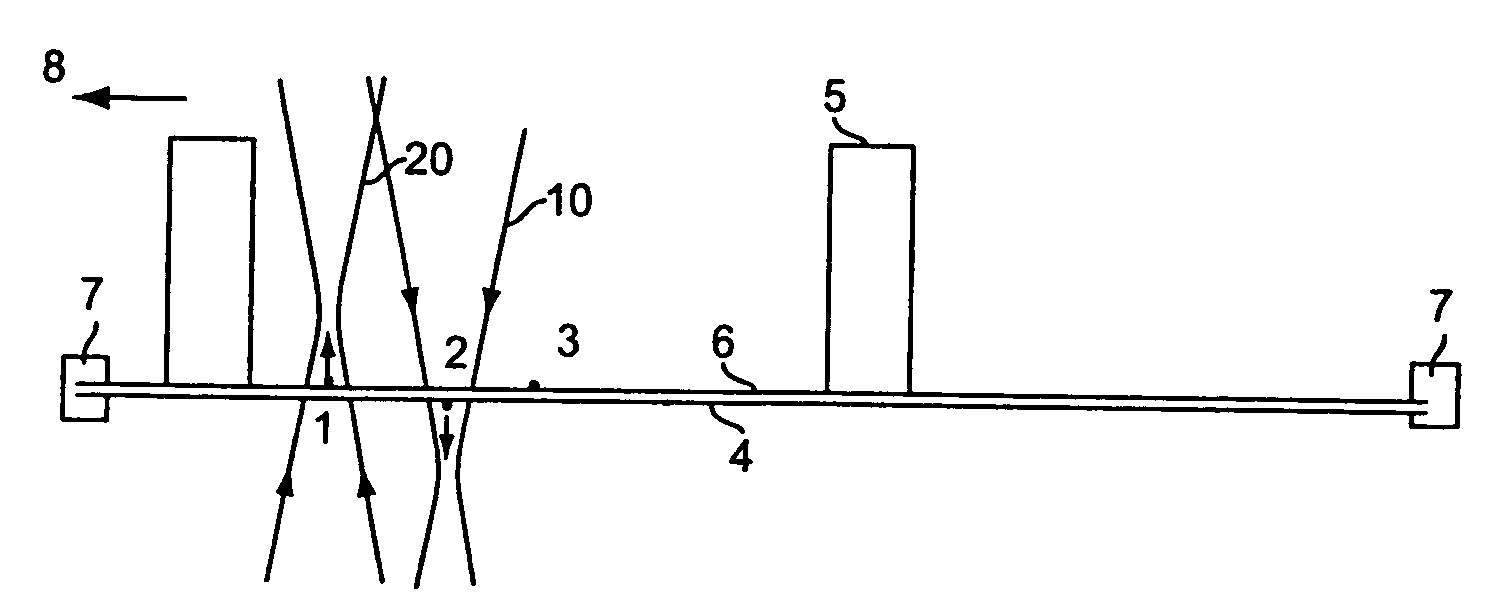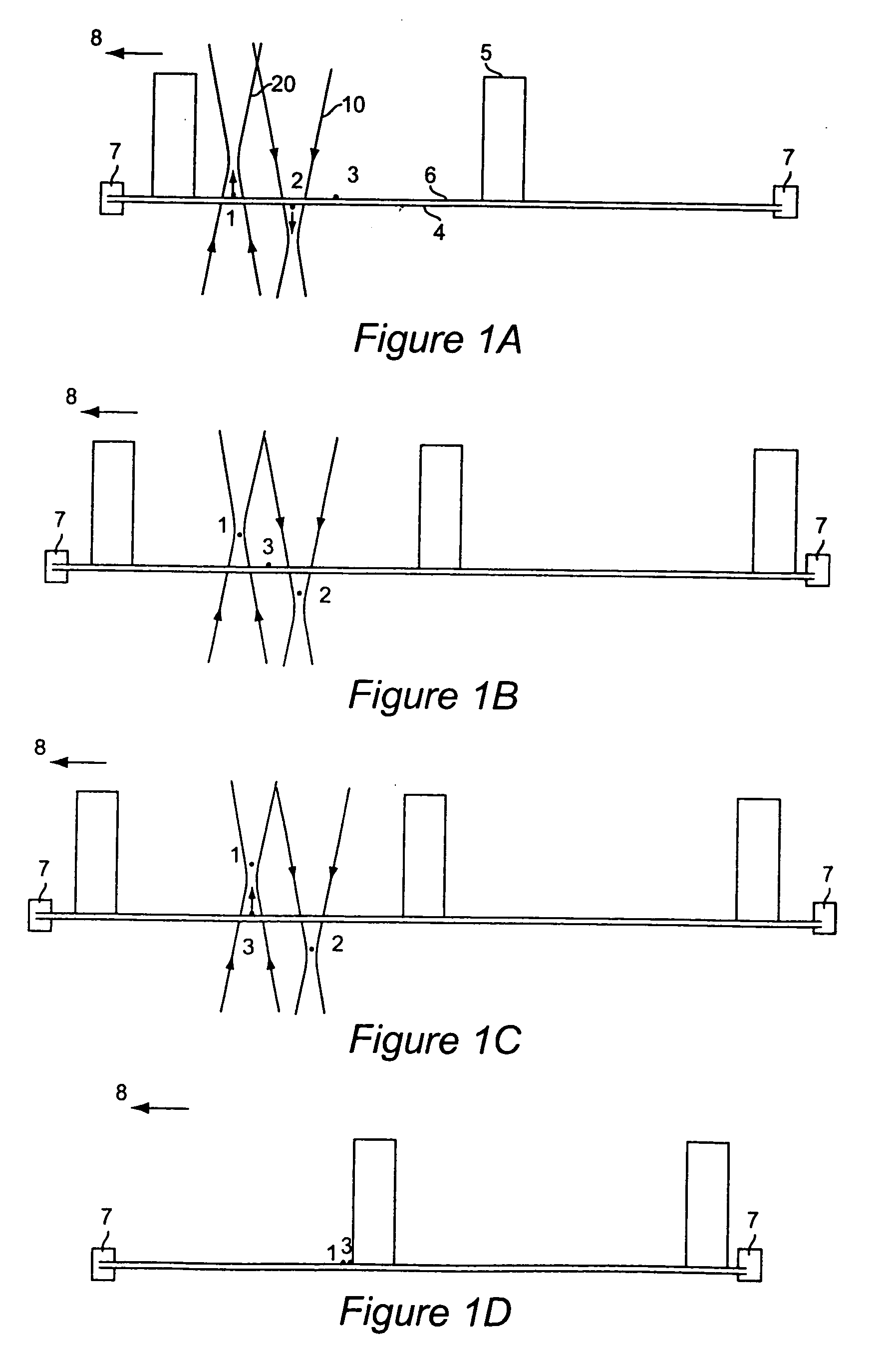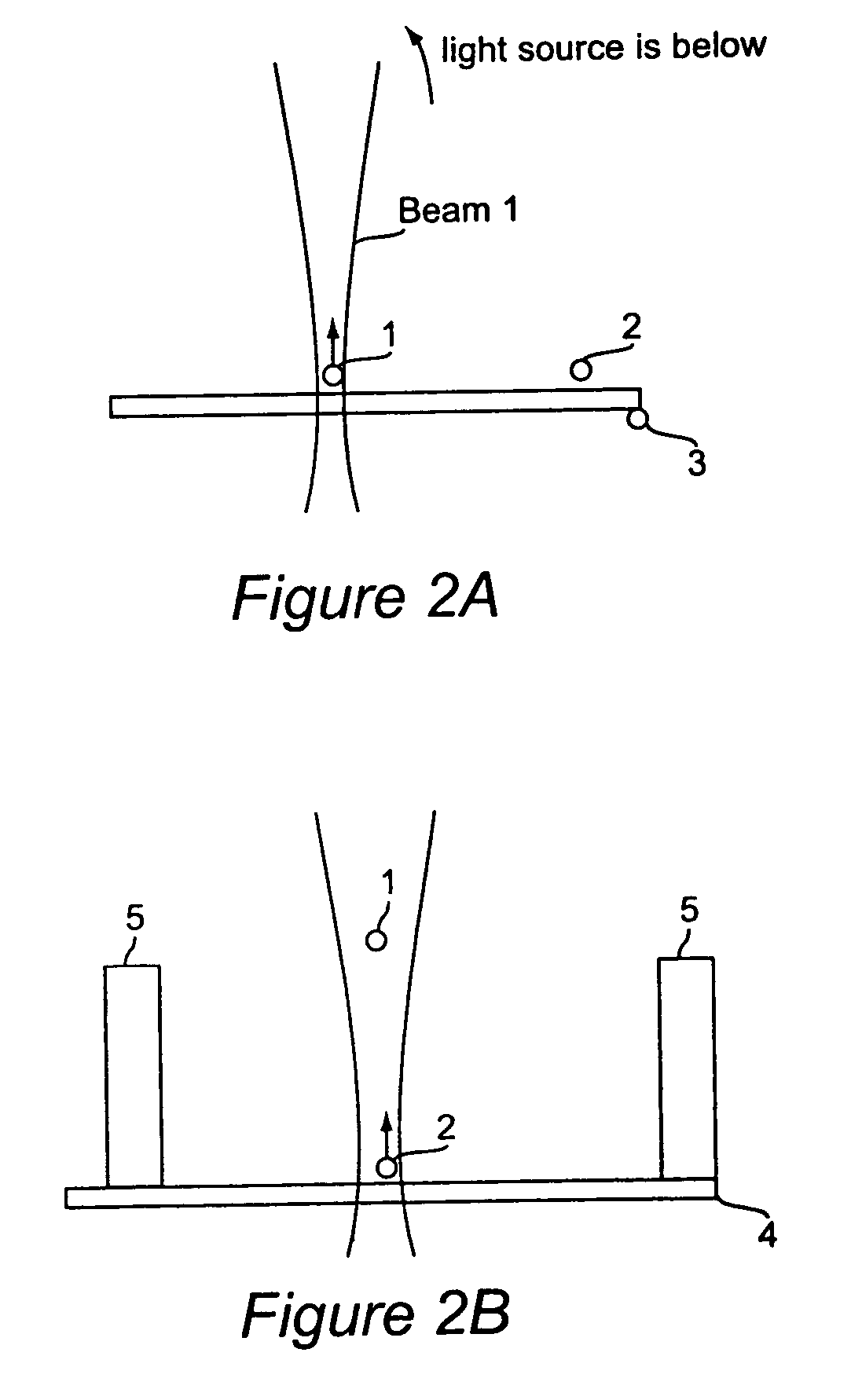Means of removing particles from a membrane mask in a vacuum
a vacuum and membrane mask technology, applied in the field of electro-beam projection lithography system, can solve the problems of substantially more laser power and probably much slower speed
- Summary
- Abstract
- Description
- Claims
- Application Information
AI Technical Summary
Benefits of technology
Problems solved by technology
Method used
Image
Examples
Embodiment Construction
[0031] The most effective way to clean particles from a reticle is to apply optical levitation forces to remove the particles. Specifically, a combination of radiation pressure and laser gradient forces seems best suited for this application. In order to be effective, the laser forces must be greater than the reticle-particle adhesive forces. However, taking account of the wide nature and physics of adhesive forces, it is difficult to determine a “typical” adhesive force.
[0032] By focusing a single laser beam with a high numerical aperture (NA) objective lens, a gradient field of light intensity is created with high intensity values in the focal volume and lower in the periphery. If the interaction with a particle is primarily determined by beam refraction and when the absorption is negligible, the net force acts toward the focal volume. The net force (trapping force) can be used to “pull” and to confine micro- and nanometer-sized objects in the focal volume. Additionally, a radiat...
PUM
 Login to View More
Login to View More Abstract
Description
Claims
Application Information
 Login to View More
Login to View More - R&D
- Intellectual Property
- Life Sciences
- Materials
- Tech Scout
- Unparalleled Data Quality
- Higher Quality Content
- 60% Fewer Hallucinations
Browse by: Latest US Patents, China's latest patents, Technical Efficacy Thesaurus, Application Domain, Technology Topic, Popular Technical Reports.
© 2025 PatSnap. All rights reserved.Legal|Privacy policy|Modern Slavery Act Transparency Statement|Sitemap|About US| Contact US: help@patsnap.com



